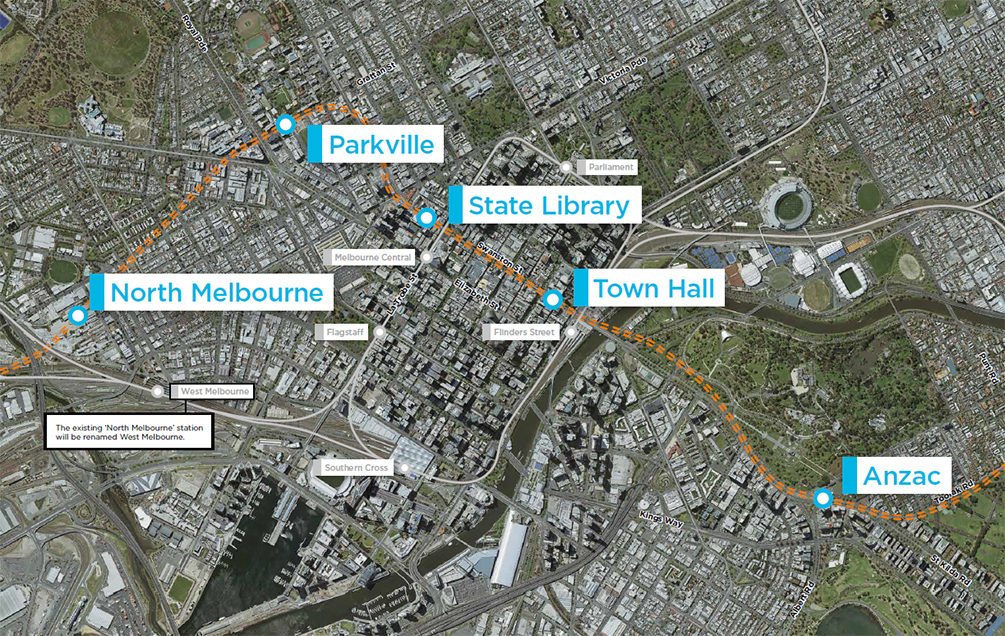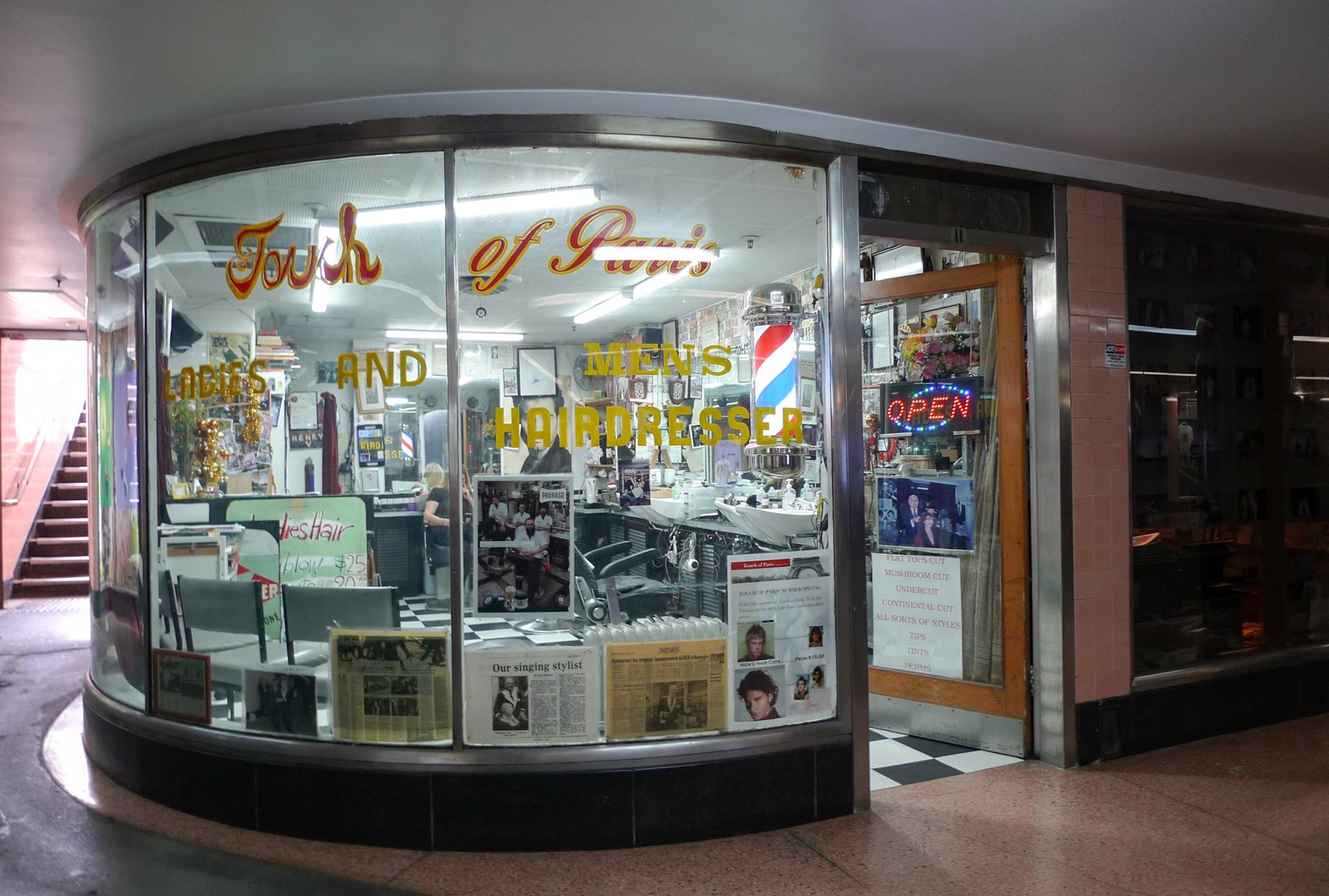National Trust responds to Melbourne Metro Project Early Works Plan and Precinct Development Plans

At the end of last year the National Trust prepared a substantial submission to the Cross Yarra Partnership (CYP) in response to the Early Works Plan and Precinct Development Plans released as part of the Melbourne Metro Project. As part of our submission to CYP, we expressed our concerns regarding various issues, including the lack of Traditional Owner consultation; the extensive tree removal proposed; the urban design response of the new built form; the relocation of various pieces of public art; over-site development at the new stations; and impacts on Federation Square and the Campbell Arcade.
While we understand the strategic justification for the project, and acknowledge that heritage is but one factor that will constrain the design and construction, in our submission we emphasised the importance of cultural heritage across the footprint of the project, particularly in regard to community engagement and satisfaction with the project, placemaking within the urban design response, and in leaving an enduring legacy for the future of the City. Below are some of our key concerns in further detail. To read our submission in full, please click here.
Aboriginal Cultural Heritage
Ongoing consultation with Traditional Owners is essential in realising a connection to Country where meaningful design is not about an end result, but a process of connections between people and place. The National Trust believes that the Melbourne Metro Project presents a unique opportunity to create meaningful contemporary places for Aboriginal and non-Aboriginal people. Meaningful consultation with Traditional Owners involves engagement with people in a project throughout its development, creating ongoing connections to place for people and culture, and cannot be an addition in the final stages via landscaping solutions only. Engaging with Traditional Owners in urban design processes will create positive outcomes for the public interface of the Project, creating a contemporary connection to culture. Our submission recommends engaging an organisation such as Indigenous Architecture and Design Victoria to provide expert advice regarding consultation and design.
Works Plan
In total the Early Works Plan proposes the removal of 316 trees across seven precincts. While we acknowledge that some tree removal would be required as part of the Project, we submit that the Early Work Plan does not sufficiently demonstrate that the removal of these trees is associated with the Early Works. We note that the Environmental Performance Requirement AR1 states: “Trees to be removed during early works must only be those associated with early works”. There appears to be no evidence in the exhibited Early Works Plan to confirm that the extent of tree removal is directly associated with early works.The National Trust is concerned that the Early Works Plan represents the worst-case scenario of tree removal over the entire construction footprint of the Project, and that the detailed design process could see many more trees retained. We are also particularly concerned about the proposed removal on trees along Royal Parade which was not included in the EES, and is a result of amendments to the functional design of the station to accommodate the University of Melbourne and the Royal Melbourne Hospital. Along with St Kilda Road, Royal Parade is one of the finest nineteenth century Melbourne boulevards, a recognised example of late-19th century grand boulevard plantings, and arguably among the best remaining elm avenues in the world.
Campbell Arcade
As noted in the Development Plans CBD South Station, ‘A direct below ground underpass is proposed from the CBD South Station to Flinders Street platforms via the existing Degraves Street underpass’.The cultural heritage impacts on the heritage-listed Campbell Arcade are a more recent design response and were not discussed or interrogated during the EEs process. At a meeting between National Trust, MMPR and CYP in December 2017, it was noted by CYP that ‘the proposal to connect the Town Hall to Flinders Street station via Campbell Arcade aims to utilise existing infrastructure that is somewhat currently underutilised, particularly in comparison to access points at Elizabeth Street and Swanston Street’. As shown in the plans, the proposed connection would require access to Campbell Arcade, resulting in the removal of three shops on the eastern side, and the construction of a ticket gate which would removal free public access to the space.
The National Trust would like to see all alternative options explored before this section of the Development Plan gains approval. Our recommendation would be to move the ticket gate to reduce impacts on the number of shops free accessible to the public, and to relocate the walkway connection to the larger shop in the south-eastern corner (currently a newsagents) so multiple shopfronts do not have to be removed, and the symmetry of the arcade can be retained.
Federation Square
As documented in the reports exhibited by CYP, the final architectural design of the Federation Square entry is currently ‘under review with stakeholders and will be subject to an amended Development Plan at a later stage’. Although not currently registered as a heritage place, perhaps due to its relatively recent construction, the National Trust submits that Federation Square clearly demonstrates heritage significance for aesthetic, social and historical reasons at the State level. As such, the National Trust believes that a heritage assessment should be prepared as a matter of urgency to ensure that insertions do not adversely impact the aesthetic and architectural significance of the place.
The National Trust submits that if the western shard is to be the preferred location for the station entrance in Federation Square, that the existing built fabric should retained unaltered rather than demolished or redesigned, or that any new built fabric should be developed in consultation with the original architects. As noted in the Development Plan ‘at Federation Square the visual appearance will be true to the original design intent and maintain the integrity and functionality of the valued meeting place’.
These concerns were compounded in December when the Government announcement that a contract has been signed with Apple to replace the Yarra Building at Federation Square, despite no public consultation being undertaken. We believe there is an urgent need to develop an overall masterplan for Melbourne’s most important public space to guide future development, before the integrity of the architectural design is lost forever.
To read our submission in full, please click here.

+ There are no comments
Add yours